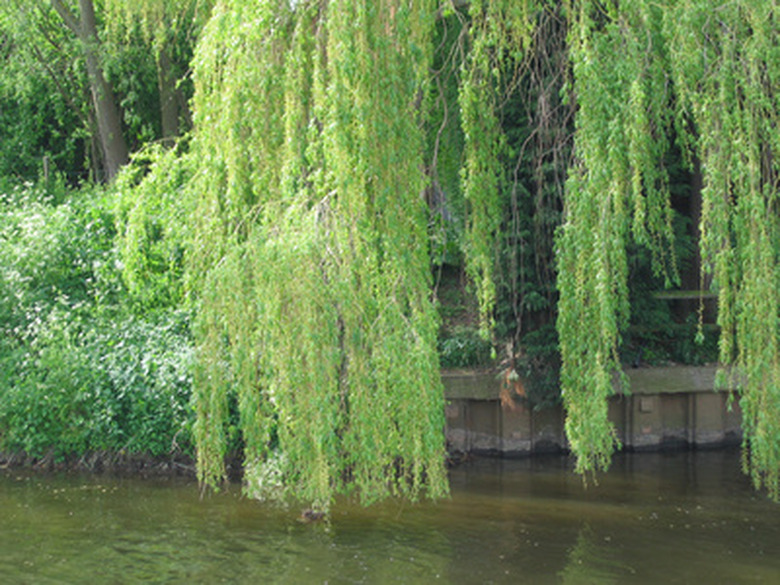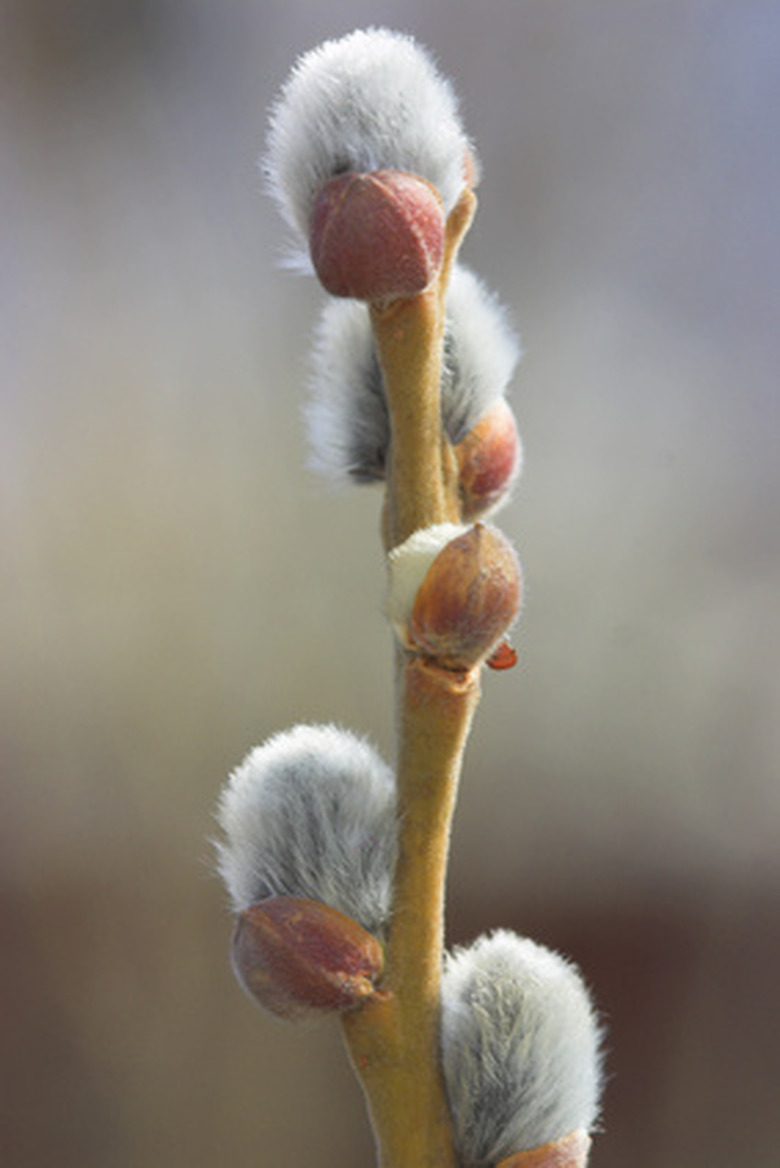How To Identify Willow Trees
The most recognizable willow tree species are the weeping willow and the pussy willow, but there are several other willows found in Europe, North America and Asia. Willow trees are best known for their love of water and their lovely shapes. At first glance, willow trees may seem difficult to distinguish between different species, but you can identify willow trees upon closer inspection of their various characteristics. To help in properly identifying the willow trees, you can reference a tree field guidebook, which you can obtain from your local library or agricultural extension office.
Step 1
Identify the weeping willow ("Salix babylonica") by its short trunk, long drooping branches that often touch the ground and mature size of 30 to 70 feet tall. Found growing near bodies of water, the weeping willow has non-lobed, long, narrow and smooth leaves that are ¼ to ½ inch wide and 1 to 2 inches long or longer with finely toothed leaf edges.
Step 2
Look for long, narrow but slightly wider leaves that are non-lobed, smooth and shiny with fine double teeth along the edges to identify the shining willow (S. lucida). This short-trunked, shrub-like willow tree grows up to 25 feet tall and has smooth, light to reddish brown bark. The shining willow bears small, fuzzy, capsule-like "fruits" containing seeds.
- The most recognizable willow tree species are the weeping willow and the pussy willow, but there are several other willows found in Europe, North America and Asia.
- Found growing near bodies of water, the weeping willow has non-lobed, long, narrow and smooth leaves that are ¼ to ½ inch wide and 1 to 2 inches long or longer with finely toothed leaf edges.
Step 3
Spot the pussy willow (S. discolor or S. caprea), also called the glaucous willow, by looking for its small size and shrub-like form, reaching only 25 feet tall at most. The pussy willow's fuzzy catkins are the largest of all the willow species and the tree has long, narrow leaves with pale-colored undersides and finely double-toothed edges. The bark is grayish to reddish brown, starting out smooth and becoming scaly as the tree matures.
Step 4
Identify the crack willow tree (S. fragilis) by its ridged and deeply furrowed bark that's dark brown to grayish black. The crack willow has yellow, brittle twigs, grows 50 to 80 feet tall and has long, narrow, smooth, ½-to-1½-inch-wide and more than 2-to-6-inch-long leaves with pale undersides and fine double teeth along the leaf edges.
Step 5
Look for leaves that are very narrow and green on both sides to identify the black willow (S. nigra). The black willow grows 30 to 50 feet tall with a 1-to-2-foot trunk diameter and bears tiny, leaf-like "stipules" on either side of the leaf stalks beside the leaves.
- Spot the pussy willow (S. discolor or S. caprea), also called the glaucous willow, by looking for its small size and shrub-like form, reaching only 25 feet tall at most.
- The pussy willow's fuzzy catkins are the largest of all the willow species and the tree has long, narrow leaves with pale-colored undersides and finely double-toothed edges.
Tip
You'll find willow trees growing in wet soils, usually near bodies of water, such as along streams, rivers, lakes and swamps. Most willows have vigorous, wide-spreading root systems.
Warning
Don't confuse the weeping willow with the white willow (S. alba), which resembles the weeping willow because of its slightly drooping twigs, but its branches don't droop as much. Growing 50 to 80 feet tall, the white willow has olive-green branches and yellowish brown twigs. The white willow is also distinguishable by its leaves, which have fine, silky hairs covering both the undersides and top surfaces.

